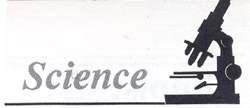 |
Home | Search | Browse | About IPO | Staff | Links |
 |
Home | Search | Browse | About IPO | Staff | Links |

Nuclear wastes:
European
'solutions' By JULIE A. DUTTON A RECENT article in Illinois Issues (see "What to do with the heaps and bundles of radioactive wastes?," October 1980) prompted one Winnetka reader, Constance Porteous, to ask: What do the European countries do with their radioactive wastes? A search of the science journals indicates that radioactive waste disposal is no less a headache overseas. When nuclear fuel is depleted or "spent," it is withdrawn from the reactor. This highly radioactive waste is generally dealt with in one of two ways: storage or reprocessing. The United State has banned spent fuel reprocessing (a procedure which recovers plutonium and unused uranium) and currently stores the fuel rods intact in swimming pool-like facilities. A federal policy on permanent disposal is being formulated. Other countries, however, such as France, England, Switzerland and Germany do allow reprocessing. (Reprocessing is often delayed by one or two years to allow time for those spent fuel components with shorter half-lives to further decay and therefore lower the temperature of the spent fuel for reprocessing.) After the plutonium and unused uranium are extracted, the wastes are in liquid form and highly radioactive. These wastes, of course, must be isolated from contact with man and his environment. The first step toward this is usually encapsulation in glass (vitrification), and the final, anticipated step is disposal deep within the earth. By using the vitrification procedure, which must be conducted entirely by remote control, the wastes are encased in molten glass. Glass is both abundant and durable, and alkali borosilicate glass — the kind generally used in vitrification — resists high temperatures and radiation damage, can entrap a variety of elements in considerable amounts, and resists leaching by water. (Some investigations indicate that under certain conditions, ceramics are more stable than glass for waste disposal, and research continues in this area.) This waste-laden glass is then placed in canisters made of metal (examples include stainless steel and lead). The canisters are then stored for several decades until their heat output is sufficiently reduced to permit safe underground disposal. This strategy ultimately provides three barriers to the release of radioactive materials: the glass encapsulation, the metal container, and the geological formation. To date, France has been the leader in vitrification. In the early 1970's the French Atomic Energy Commission was operating a small vitrification plant — in effect, the world's first. An industrial scale vitrification plant was opened in France in 1978, and France now reprocesses not only its own wastes but also those of foreign countries (including Switzerland, Belgium and Japan). India had slated operation of a vitrification plant for 1980, and West Germany has plans for demonstration plants. Britain is expected to have a pilot vitrification plant by 1981 and a full scale operation by the late 1980's. In the U.S., extensive research and development programs in vitrification are underway, but there are no plans for an industrial scale plant. It is not apparent from the literature that any nation has yet disposed of its reprocessed vitrified wastes in a deep geological formation. The geological and hydrological features of a potential underground disposal site must be scrutinized to assure the containment of the wastes. The essential requirements for such a site would include the absence of circulating ground water and seismic activity and geological materials able to withstand the decay heat. Satisfying all the criteria for an ideal storage site is no easy task. For example, Switzerland relies on foreign reprocessing but is responsible for disposing of the resulting high level wastes. Even though the Alps may appear a tempting cemetery, they have an unpredictable structure and face the possibility of glaciation. The problems are further compounded by a lack of information: Switzerland has no governmental geology agency and most studies that have been done were by private companies competing with one another. Feasibility studies of geological waste sites in the United Kingdom have met community resistance. Although some preliminary drilling has been conducted in northern Scotland, at least two applications for further studies have been rejected because of objections from local authorities. The United Kingdom Department of the Environment has issued a report which projects there will not be any disposal before the end of the century, if only because the vitrified waste blocks will not have "cooled" sufficiently by then. Under the auspices of the European Community's Commission, Europe has an ongoing research and development program on radioactive waste management. The cooperative effort has resulted in a 10-volume directory of suitable European geological disposal sites for nuclear waste. Now, plans are underway for the cooperative effort to explore the possibility of waste disposal on and under the ocean bed. Funding, however, is uncertain. Although research is substantial, policy must be determined by government. Meanwhile, nuclear wastes continue to be produced.
Support for this column, which reports policy developments concerning science and technology, is provided in part by a National Science Foundation grant to the Illinois Legislative Council Science Unit, where Julie A. Dutton is a research associate. January 1981/Illinois Issues/9 |
|
|